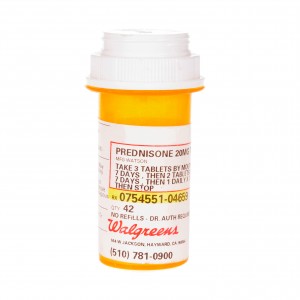Corticosteroid Use Over Time Increases the Risk of Organ Damage in Lupus Patients

 Researchers at Eli Lilly and Company, the University of Maryland School of Medicine and The Johns Hopkins University School of Medicine recently revealed that corticosteroid treatment over time in patients with systemic lupus erythematosus (SLE) increases the risk of developing organ damage. The study was recently published in the journal Lupus Science & Medicine and is entitled “Effect of corticosteroid use by dose on the risk of developing organ damage over time in systemic lupus erythematosus — the Hopkins Lupus Cohort.”
Researchers at Eli Lilly and Company, the University of Maryland School of Medicine and The Johns Hopkins University School of Medicine recently revealed that corticosteroid treatment over time in patients with systemic lupus erythematosus (SLE) increases the risk of developing organ damage. The study was recently published in the journal Lupus Science & Medicine and is entitled “Effect of corticosteroid use by dose on the risk of developing organ damage over time in systemic lupus erythematosus — the Hopkins Lupus Cohort.”
SLE is a severe autoimmune disease in which the body’s own immune system overreacts and attacks healthy joints and organs, resulting in inflammation, swelling, pain, disability and often in tissue destruction. Corticosteroids are usually prescribed to suppress the immune system and reduce symptoms associated to lupus, namely pain, inflammation and tissue damage. These drugs are generally effective but patients need to be carefully monitored as they can cause significant side effects. In fact, corticosteroid use over time has been linked to an increase in irreversible organ damage. Reduction in the corticosteroid dose is an important goal in SLE management.
The effects of corticosteroids therapy on the risk of organ damage in the context of SLE clinical trials and their corresponding clinical end points are underexplored. In this study, data from the Hopkins Lupus Cohort was analyzed to determine the impact of different corticosteroids doses on the overall risk of organ damage over time.
Researchers found a dose-response relationship between the mean dose of prednisone (a corticosteroid prescribed as immunosuppressant drug in inflammatory diseases) and the risk of developing irreversible organ damage over time. SLE patients under a mean prednisone dose of ≥ 20 mg/day in comparison to < 7.5 mg/day more than doubled their risk of organ damage. Researchers estimated that a prednisone dose increase of 1 mg/day was linked to a 2.8% increase in the risk of developing new organ damage.
In terms of individual organs, researchers found that the most frequent organs that experience the first damage over time are the eyes (ocular damage by the development of cataracts) and musculoskeletal damage. It was found that a daily prednisone dose ≥ 7.5 mg increased the risk of osteoporotic fractures, eye cataracts and cardiovascular damage. In fact, a prednisone dose increase of 1 mg/day was found to be linked to a 3.8% increase in the risk of developing cataracts and a 4.2% increase in the risk of osteoporotic fractures.
Besides the mean dose of prednisone, disease activity and corticosteroid use, patient’s age at cohort entry, year of SLE diagnosis and initial organ damage score, were all found to be significant predictors of the risk of organ damage.
The research team concluded that corticosteroid use in SLE increases the risk of irreversible organ damage, and that this increased risk is the result of several factors, including corticosteroid treatment but also disease activity. Researchers believe that there is an urgent need for corticosteroid-sparing therapies for lupus patients that not only alleviate disease symptoms but also reduce disease activity.






